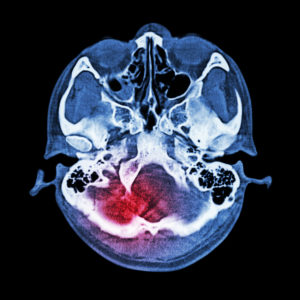Portland Medical Malpractice Lawyer Explains Failure to Treat a Stroke in Oregon
A Portland medical malpractice lawyer can help you handle many different types of medical errors or medical negligence cases, including failure to treat a stroke. Indeed, medical providers are specially trained to identify stroke victims and provide treatment. According to statistics, there are almost 800,000 people who have a stroke each year in the United States. This equates to one person every 40 seconds who has a stroke, and sadly one person who dies of a stroke ever 3 minutes and 14 seconds. As strokes are common, many physicians and other medical providers have experience in managing stroke victims, and are aware that time is of the essence. If a stroke patient is not properly diagnosed and treated in a timely manner, it can lead to permanent injury or even death. The effects from a stroke can be catastrophic, leaving victims permanently disabled. While not all poor stroke outcomes are caused by a failure on the part of the medical team, far too often stroke victims are not identified in a timely manner, or there is a delay in providing life-saving treatment. Indeed, a failure to treat a stroke due to medical malpractice in Oregon is significant and can lead to serious personal injuries.
This is why if you or your loved one suffered a negative outcome from a stroke and you feel that medical malpractice may have played a part, you should have your case reviewed by an experienced Portland medical malpractice lawyer. There is no upfront cost to meet with our trained legal team. We give free case evaluations and consultations, where there is no obligation to sign up with our law firm. But if you choose our law firm and if we accept your case, there is no upfront costs until we recover compensation for you. And even then, we only recover a percentage of our legal fee from your total recovery. To learn more about how our Portland medical malpractice lawyer can help handle your failure to treat a stroke case in Oregon, call us today.
Types of Strokes
While stroke is a blanket term, there are actually a few different types of strokes that victims can experience. Hemorrhagic strokes occur when a weakened blood vessel ruptures, leading to bleeding on the brain. This type of stroke is most often caused by aneurysms, high blood pressure, or arteriovenous malformations (AVMs). Ischemic strokes occur when a clot obstructs a blood vessel. This is the most common type of stroke. Transient ischemic attack (TIA) is a warning stroke that is caused by a temporary clot. Lastly, cryptogenic strokes are strokes that have no identifiable cause.
Symptoms of a Stroke
Medical professions and even people who are not in the medical field are often aware of the acronym F.A.S.T. This refers to the most common symptoms of stroke, which include the following:
- Face – Facial drooping on one side is often indicative of a stroke.
- Arm – If one arm is weak or numb, this may be a symptom of a stroke.
- Speech – A patient whose speech is slurred or even unintelligible may be experiencing a stroke.
- Time – This is not a symptom of a stroke, but is part of the F.A.S.T. acronym. It is vital that the time in which the symptoms are first noticed is identified as some life-saving medications can only be administered in a short window after the stroke symptoms begin.
Other symptoms of stroke include confusion, impaired balance or impaired mobility, impaired level or consciousness, and impaired vision. A patient who comes in with any of these symptoms should be urgently diagnosed and treated to avoid permanent brain damage or death.
How are Strokes Diagnosed?
Strokes can affect people young and old. Sometimes, there is a delay in diagnosis for young victims as some medical providers may think that a patient’s symptoms are likely due to another cause given their age. This can have devastating or even deadly consequences. The most common ways in which a stroke is diagnosed includes the following:
- CT scan – A CT scan can show doctors and other medical professionals if any area of the brain has been damaged, or if there is bleeding in the brain, which can indicate a hemorrhagic stroke.
- MRI – This is another type of imaging test which may be used alone or in addition to a CT scan to identify any brain damage or bleeding.
Treatments for Stroke Victims
The gold standard for treating stroke victims is t-PA, a clot buster. However this must be giving within 3 hours of the onset of stroke symptoms. This is why time is of the essence for these patients to avoid or minimize long-term consequences of a stroke. After 3 hours stroke victims may be given a blood-thinning medication (i.e clopidogrel or aspirin).
In some cases, stroke victims may require surgery to remove the clot from a blood vessel. This is referred to as a thrombectomy. Beyond the initial treatment for a stroke, stroke victims often require rehabilitation to try to regain function of anything that is impaired from the stroke. In cases where treatment is given in a timely manner, some victims may have no residual effects from the stroke.
How Can Poor Stroke Outcomes be Caused by Medical Malpractice?
While even with the best treatment some victims suffer significant disability or death, there are times when diagnosis and treatment is delayed, leaving victims permanently disabled of fatally injured. Medical malpractice can lead to poor stroke outcomes due to the following:
- Delay in diagnosis – if a patient comes in reporting stroke symptoms and they are not immediately examined and provided treatment, this can be due to medical malpractice.
- Failure to administer tPA in a timely manner – tPA as mentioned above can greatly reduce the chances of long-term effects from a stroke. Failure to administer tPA within a 3 hour window when a patient was seen in that window can be due to medical malpractice.
- Failure to diagnose stroke in a young victim – young victims often are the victims of medical malpractice as medical providers often think their symptoms are caused by something else, leading to a delay in diagnosis and treatment.
- Stroke misdiagnosis – Diagnosing a patient with another condition when they in fact are experiencing a stroke can lead to life-threatening or catastrophic consequences.
- Other medical malpractice related causes of poor stroke outcomes.
Was the Failure to Treat a Stroke Due to Medical Malpractice in Oregon? Still Not Sure? Call Our Portland Medical Malpractice Lawyer for Help
If you or a loved one have been seriously injured or wrongfully killed as a result of medical malpractice contact the Oregon Medical Malpractice Lawyers at Kuhlman Law at our number below or fill out the intake form. We offer a free initial case evaluation and handle cases on a contingency fee which means that you pay no money unless we recover.
Our law firm handles cases throughout the state including Bend and Portland Oregon, Redmond, Central Oregon, Sisters, Madras, Multnomah County, Deschutes County, Salem, Eugene, Corvallis, Lane County, Medford, Gresham, La Grande, Albany, Medford, Beaverton, Umatilla, Pendleton, Cottage Grove, Florence, Oregon City, Springfield, Keizer, Grants Pass, McMinnville, Tualatin, West Linn, Forest Grove, Wilsonville, Newberg, Roseburg, Lake Oswego, Klamath Falls, Happy Valley, Tigard, Ashland, Milwakie, Coos Bay, The Dalles, St. Helens, Sherwood, Central Point, Canby, Troutdale, Hermiston, Silverton, Hood River, Newport, Prineville, Astoria, Tillamook, Lincoln City, Hillsboro, and Vancouver, Washington.
We also have an office in Minneapolis, Minnesota and take medical malpractice cases throughout the Twin Cities, including St. Paul, Hennepin County, Ramsey County, Dakota County, Washington County, Anoka County, Scott County, Blaine, Stillwater, and Saint Paul Minnesota.




